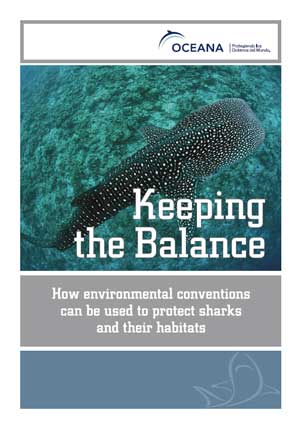Report | April 21, 2010
Keeping the balance: How environmental conventions can be used to protect sharks and their habitats
Sharks, rays and chimaeras make up the group of fish known as Chondrichthyans– these fish all have skeletons made of cartilage rather than bone. In general, Chondrichthyans grow slowly, mature late and produce few young over long lifetimes. Consequently, their populations grow at extremely low rates, leaving them exceptionally susceptible to fisheries overexploitation and slow to recover from depletion. In general, sharks are more vulnerable to overfishing than the majority of bony fishes.
In 2007, Oceana conducted an investigation into shark fisheries in Europe and around the world in harbours where European Union vessels land sharks. During these investigations, Oceana researchers talked to fishermen, captains and fishing company representatives, documenting their findings along the way. The photographs in this report demonstrate the breadth of the European trade of threatened sharks.
Ideally, activities in our oceans should be managed via an ecosystem-based approach integrating fisheries management and measures that protect the natural biodiversity. However, the current policy framework and institutional arrangements in the EU are not delivering a sufficiently high level of protection for the marine environment. To address this need, the European Commission adopted the Marine Framework Strategy Directive in December 2008, which aims to facilitate coherence between varying policies and foster the integration of environmental concerns into marine policies. The Marine Strategy Framework Directive is intended to lay out the general basis for applying an ecosystem approach to the marine environment, and will become the environmental pillar of an integrated EU maritime policy.


